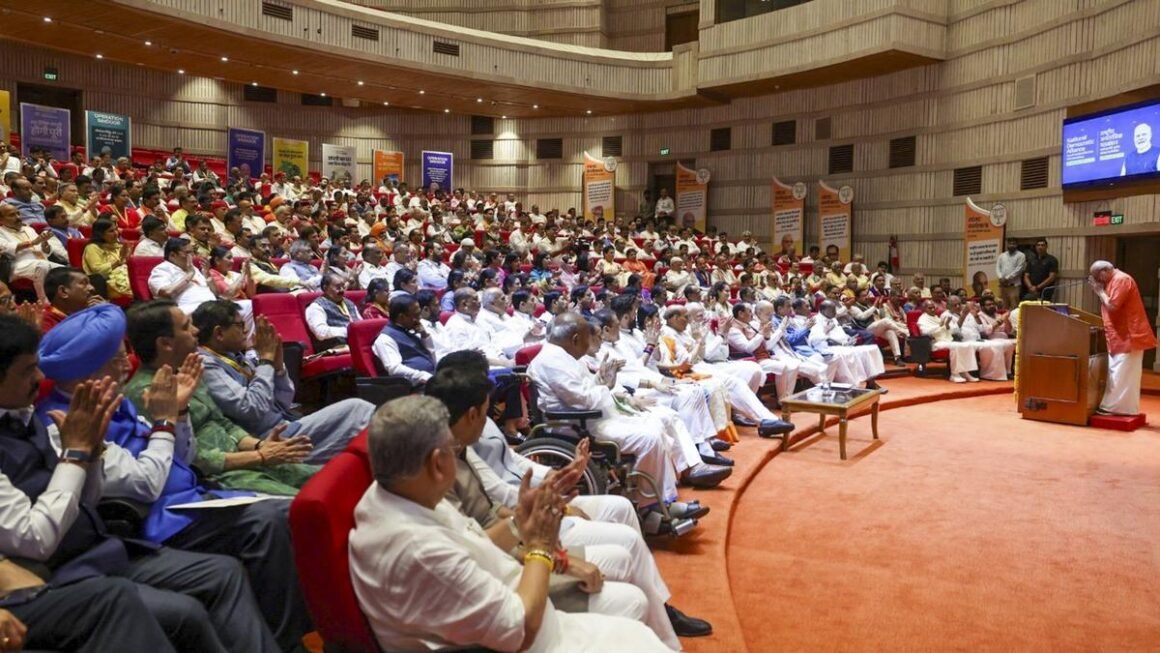
India is witnessing a crucial moment in its democratic journey as the Vice-Presidential election takes place on September 9, 2025. In a surprising but calculated move, three regional heavyweights—Biju Janata Dal (BJD), Bharat Rashtra Samithi (BRS), and the Shiromani Akali Dal (SAD)—have chosen to stay away from the contest. Their abstention has not only altered the number game but also added fresh layers of political messaging.
For the NDA, which already has the numbers stacked in its favor, the absence of these parties works like silent support. For the opposition INDIA bloc, it’s another hurdle in an already uphill battle.
Why Did These Parties Abstain?
1. Biju Janata Dal (BJD)
The BJD has always prided itself on maintaining independence in national politics. By abstaining, it has reinforced its strategy of being equidistant from both the NDA and the INDIA bloc. This approach allows the party to focus on Odisha’s regional priorities and project itself as a voice of neutrality. With seven MPs in Parliament, the BJD’s abstention sends a subtle but powerful message: it will not be dictated by national coalitions.
2. Bharat Rashtra Samithi (BRS)
For the BRS, led by K.T. Rama Rao, the abstention is rooted in symbolism. Telangana farmers are facing urea shortages and agrarian distress, and the party wants to be seen as standing firmly with them. By skipping the poll, BRS signals that its fight is not in Delhi’s corridors of power today but in the farmlands of Telangana. With four MPs, its absence may not shake the numbers drastically, but it strengthens its positioning as a farmer-first party.
3. Shiromani Akali Dal (SAD)
The SAD has opted for a boycott, citing the devastating floods in Punjab and what it calls the failure of both the state and central governments to provide effective relief. For the Akali Dal, this abstention doubles up as a reminder to its voter base that it remains committed to Punjab’s issues, even if it means walking out of a high-profile national election. The party is using this moment to reassert its identity as Punjab’s traditional guardian.
Impact on the Numbers
With these abstentions, the electoral college is trimmed to about 770 MPs, lowering the majority threshold to 386 votes. The NDA candidate, C. P. Radhakrishnan, enjoys the backing of around 427 MPs, placing him comfortably above the mark. On the other side, the INDIA bloc’s B. Sudershan Reddy commands around 354 MPs, making his chances slim. The absence of BJD, BRS, and SAD MPs effectively makes the NDA’s path to victory smoother.
Political Significance
The abstentions highlight the layered dynamics of Indian politics:
- Regional Autonomy as a Strategy: The BJD’s decision is a reminder that regional parties often prioritize long-term independence over short-term alignments.
- Local Issues on National Stage: The BRS and SAD have brought farmers’ struggles and flood devastation into national headlines through their abstention, turning a parliamentary election into a stage for regional issues.
- Indirect Boost to NDA: Whether intentional or not, their absence strengthens NDA’s chances and leaves the opposition bloc weaker in optics as well as numbers.
The Vice-Presidential election may end in a predictable NDA victory, but the abstentions of BJD, BRS, and SAD speak volumes. They show how regional parties are mastering the art of using silence as a strategy—refusing to be counted in Delhi’s power tussle, yet making sure their regional voices echo louder than ever. In Indian politics, sometimes not voting can be as powerful as casting a vote.
FOR MORE BLOGS – beyondthepunchlines.com

 Add to favorites
Add to favorites








